One of Australia’s largest war memorials, the Shrine of Remembrance located at King’s Domain on St Kilda Road was built to commemorate the valour and sacrifice of Australians who died in both World War I and World War II. Built in the classical architectural style reminiscent of the Tomb of Mausolus at Halicarnassus and the Parthenon in Athens, the memorial served as a reminder of the heroism of soldiers who fought for their ideals amidst the then oppressors. Every year, it is the site of two significant ceremonies – ANZAC Day on 25 April and Remembrance Day on 11 November.
Like many wartime memorial sites, the shrine was serene and peaceful, providing a quiet place for reflection and contemplation. It was an oasis of stillness and introspection, where the woes of war are remembered with a fervent commitment not to ever let such atrocities overtake mankind ever again.
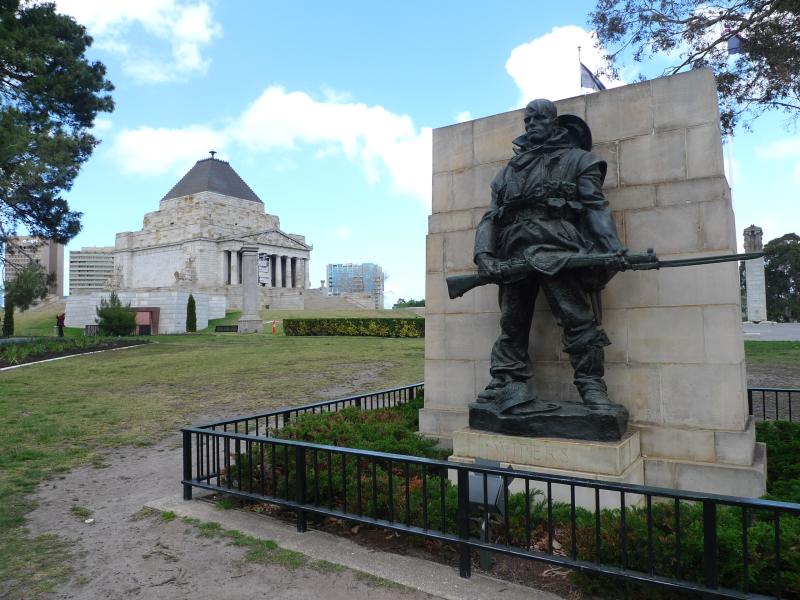
This lone “soldier” guarded the path to the memorial, standing proud against a wall.
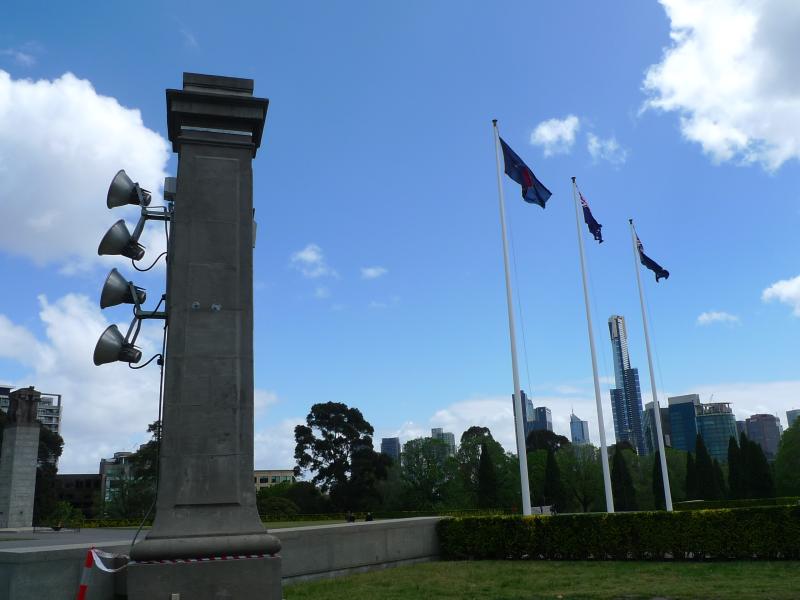
Flags to signify the national importance of the site, and speakers to announce important events for the day.
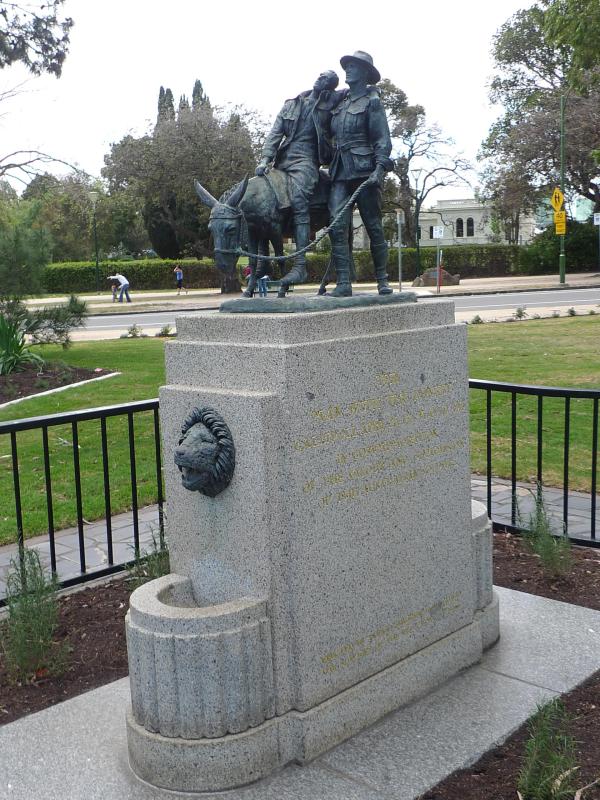
This little sculpture reminds me of the story of the Good Samaritan, lending his horse to an injured compatriot.
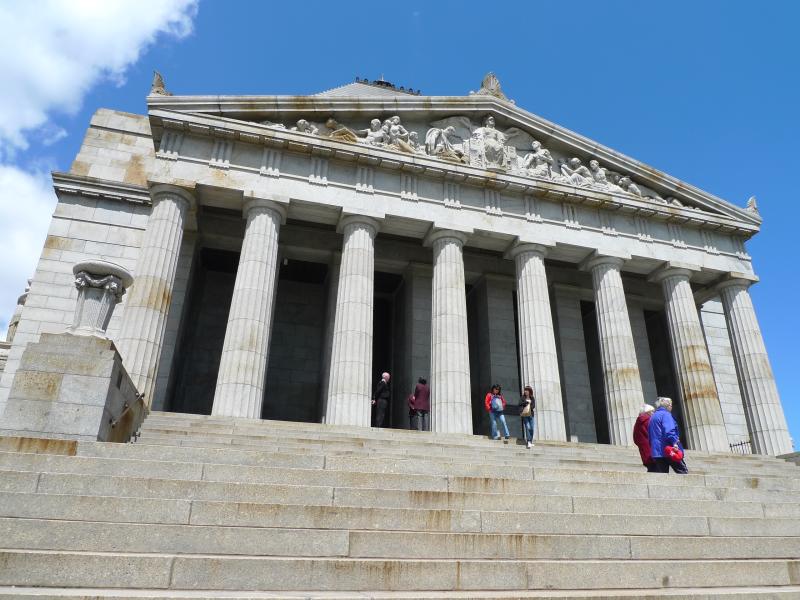
The noble facade of the memorial, designed to resemble the Parthenon in Greece with its Corinthian columns.
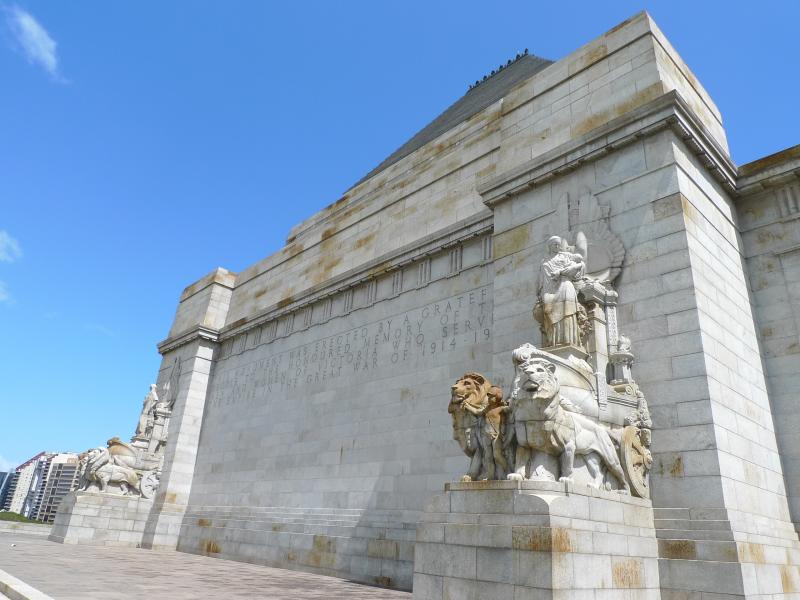
A side view of the memorial, with noble lions and classical Grecian statues astride on them.

I like this red brick wall leading from the entrance of the memorial.
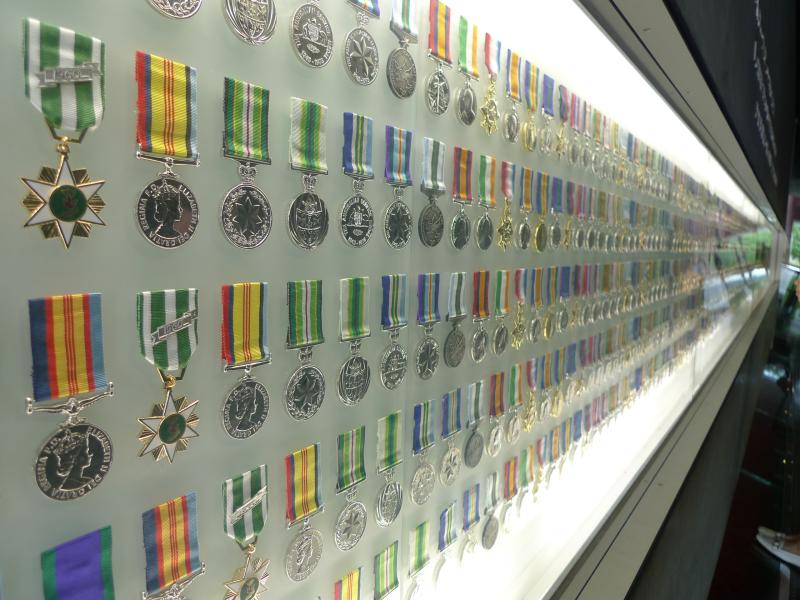
Shiny medals honouring the bravery of the various platoons and forces involved in both world wars.

A donation box decorated with poppies. These flowers were chosen because they bloomed across some of the worst battlefields in Flanders back during World War I.
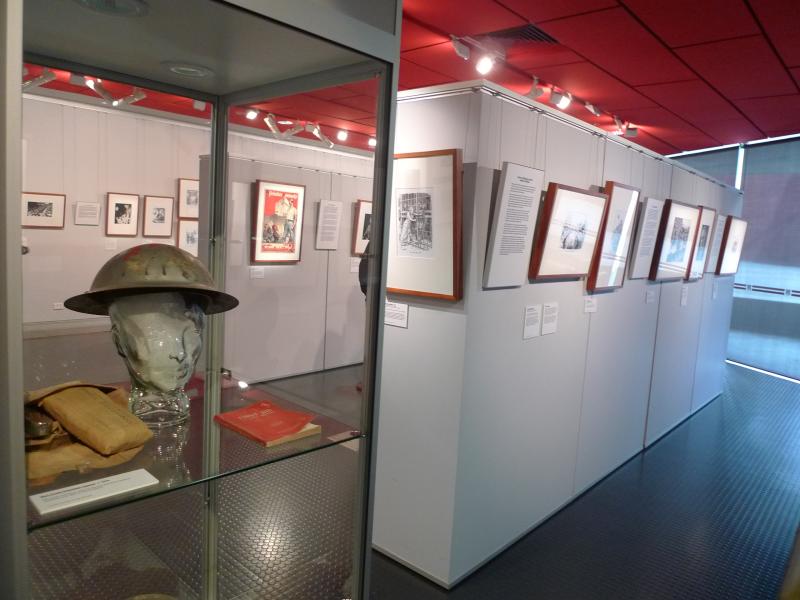
We next visited the exhibition in the memorial to learn more about both World Wars.
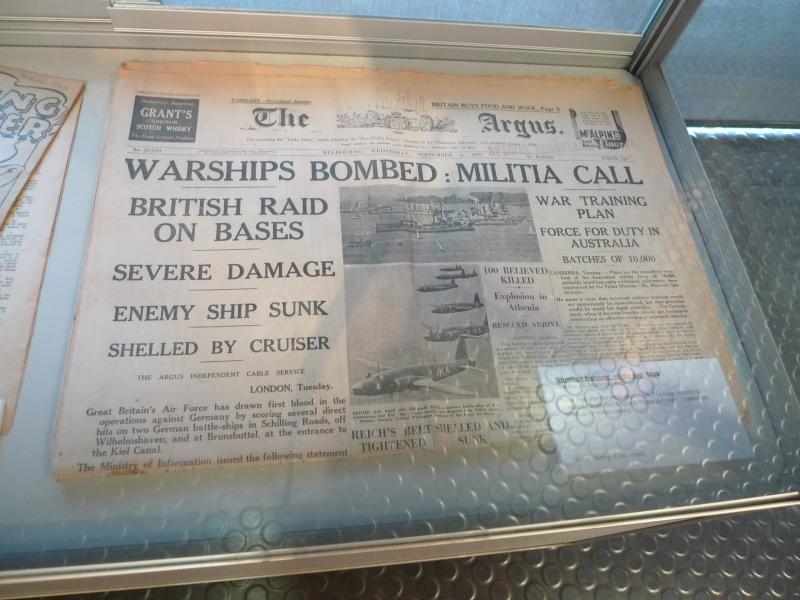
These were the scary headlines on the papers in 1939 during the onset of World War II.
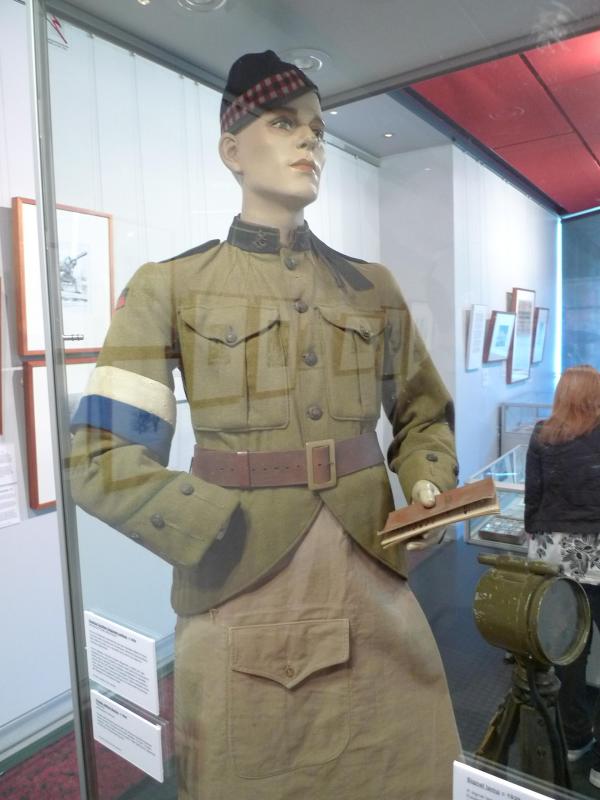
Soldiers during World War I were attired in the army green fatigues and identified by their arm bands.
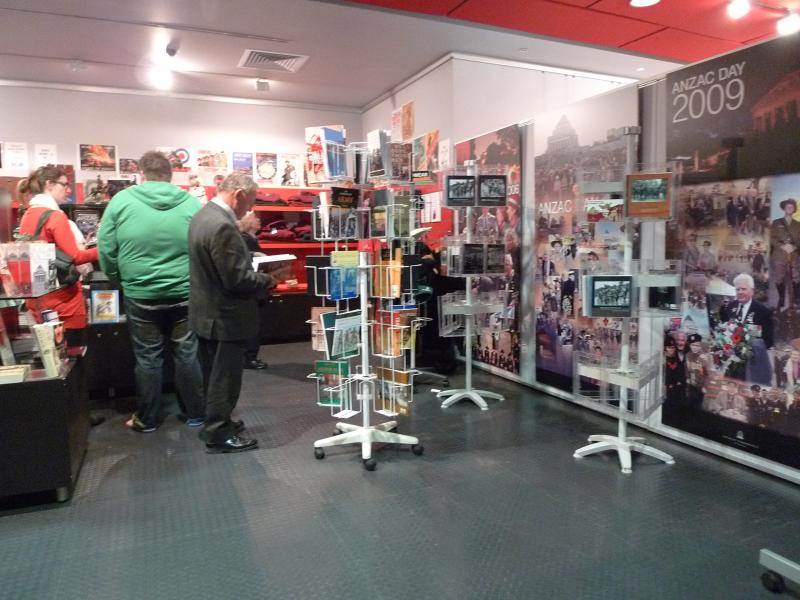
A small souvenir shop in the middle of the memorial.
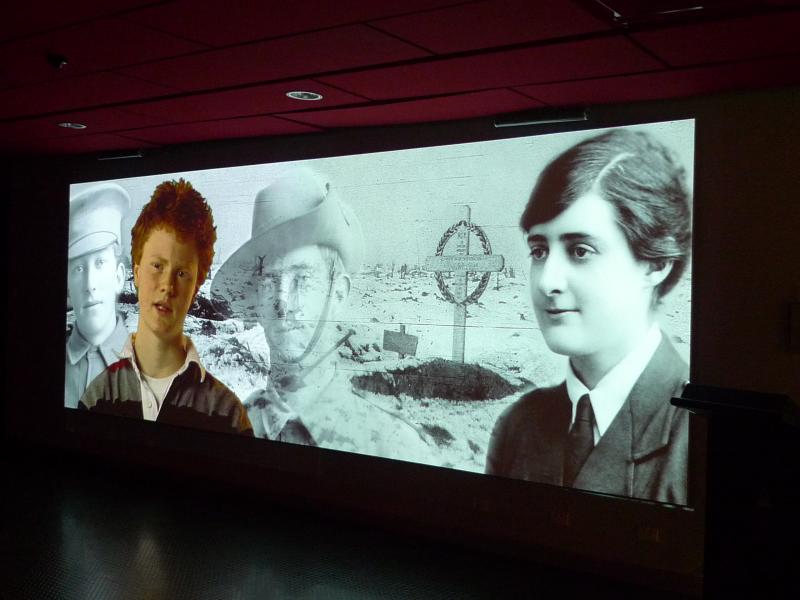
A video screening showed the opinions and feelings of modern day Australians, reflecting on the effects of war and the heroic actions of their predecessors.

The Union Jack is one of the most universally recognised symbols of British legacy in the world.
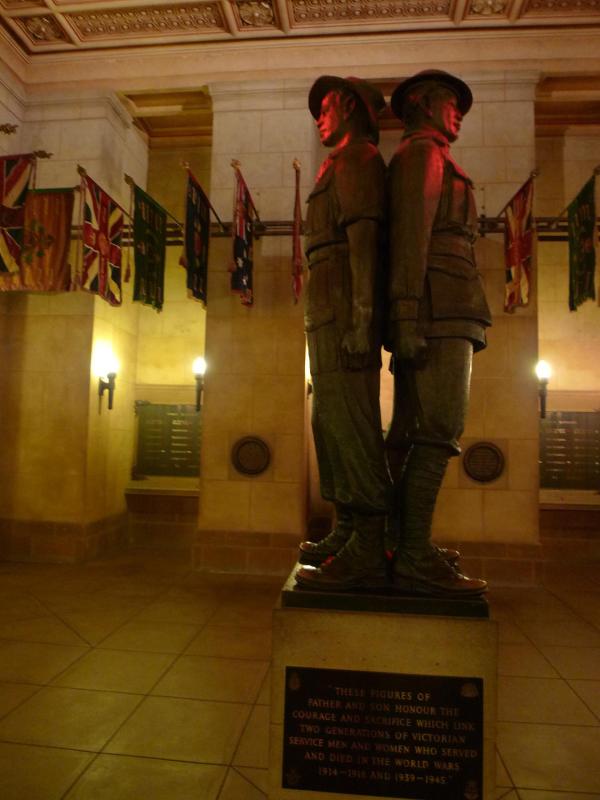
A statue of a father and son team guarding each other’s back, set amidst a room adorned with the flags of Commonwealth partners.
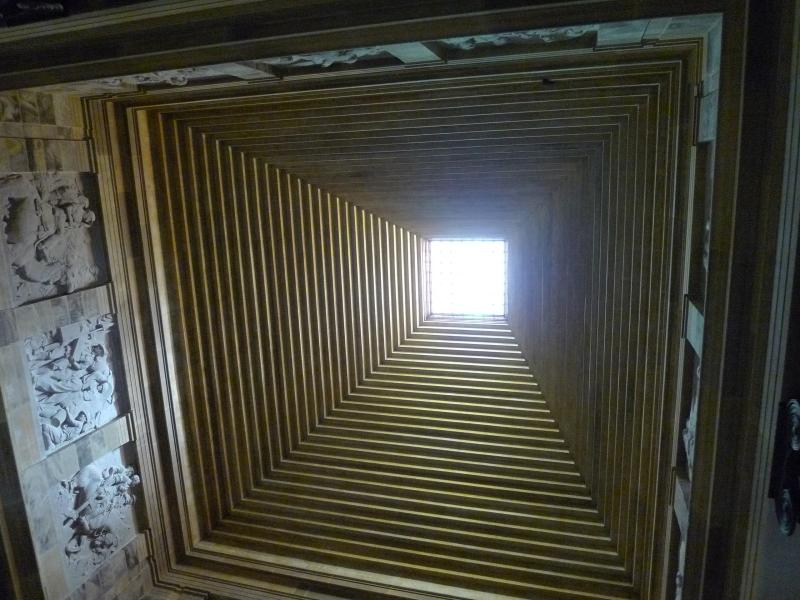
A shot of the inside view of the ceiling in the middle of the shrine.
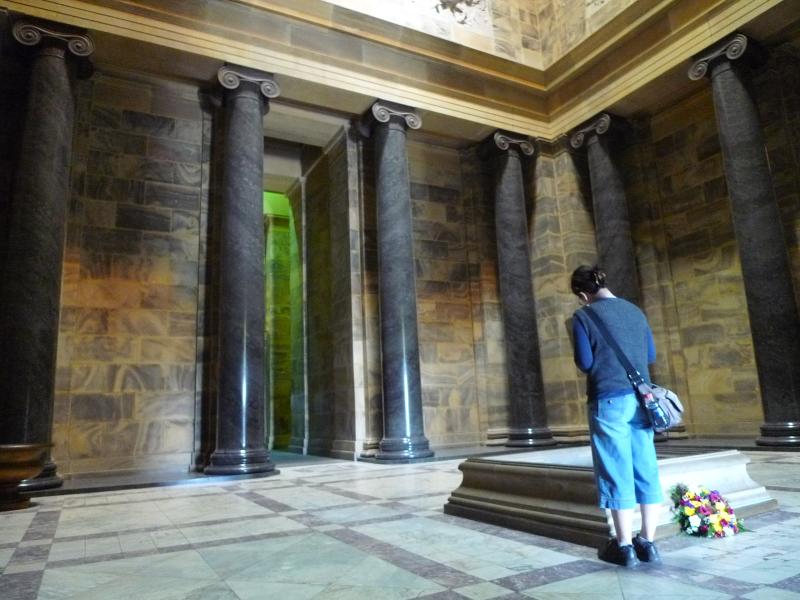
These marble and granite walls add to the gravitas of the attraction. What is this lady looking at?
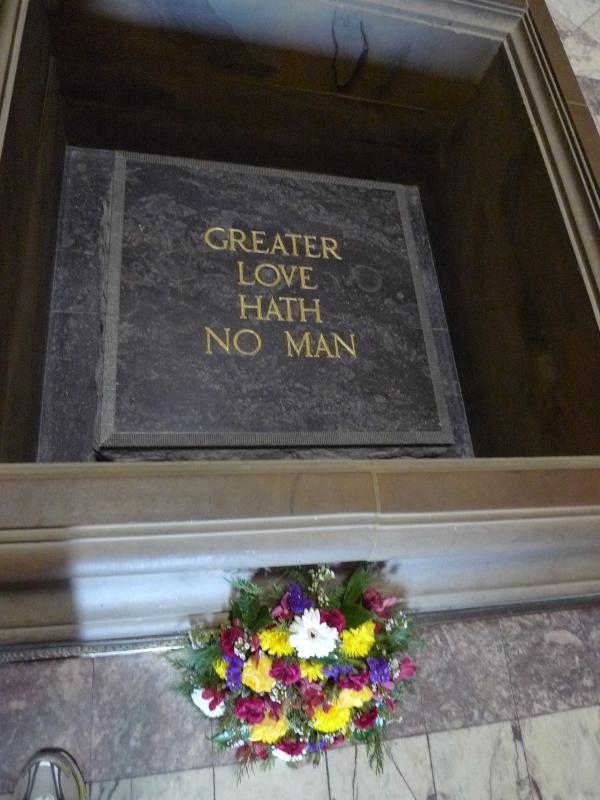
A timely reminder of the ultimate sacrifice of love.
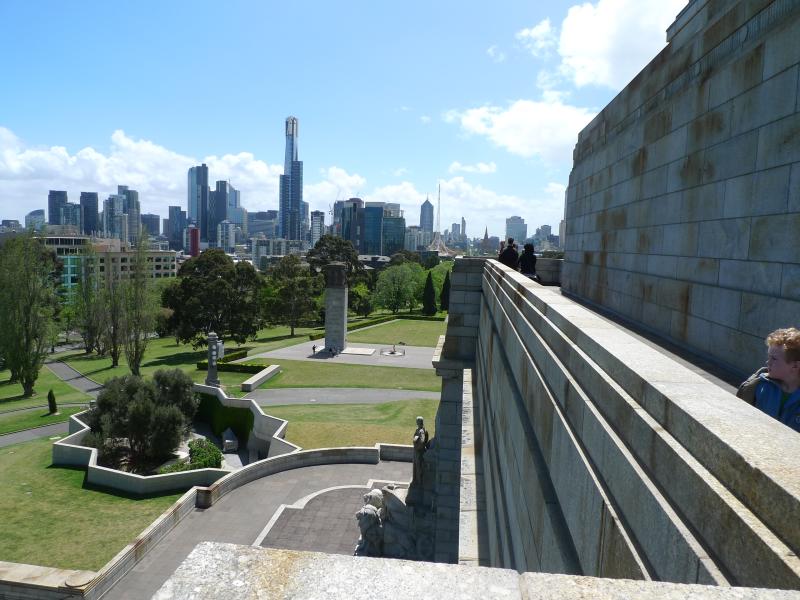
Stepping outside the dark memorial into the glorious sunshine outside provided a nice transition from the gloom of battlefields to the glory of peace. Here’s a view from the parapet of the building.
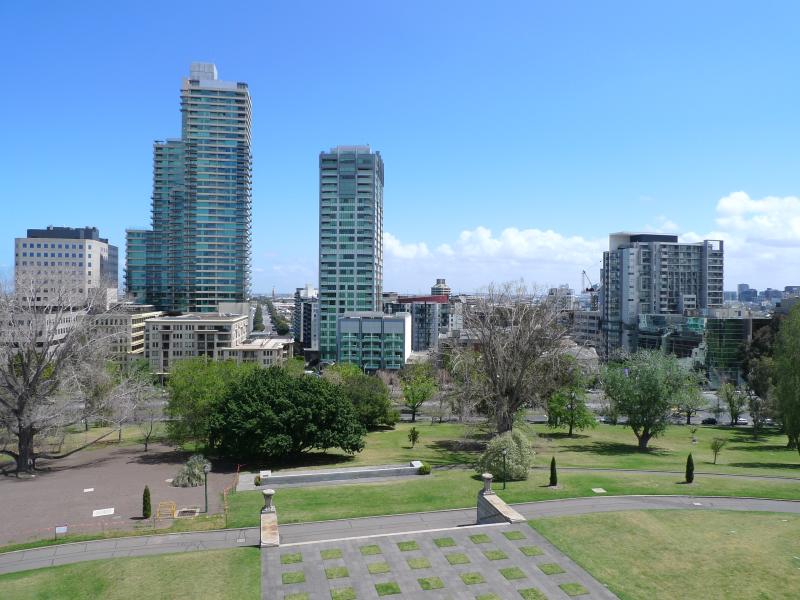
Another view of St Kilda Road and the high rise office and condominium buildings, icons of commercial success which contrasted with the stark bleakness of conflict.

A nice photographic summary of the Shrine of Remembrance, Walter.
The Union Jack you highlighted has a link to Singapore.
I visited the shrine back in March this year. Yes it was a beautiful place. But it also stirred up ironic memories of the exceedingly beautiful Mausoleum of Ataturk, which I visited a couple years back. The place had not a few references to the “glorious” defence of Gallipoli.
“dulce et decorum est.”